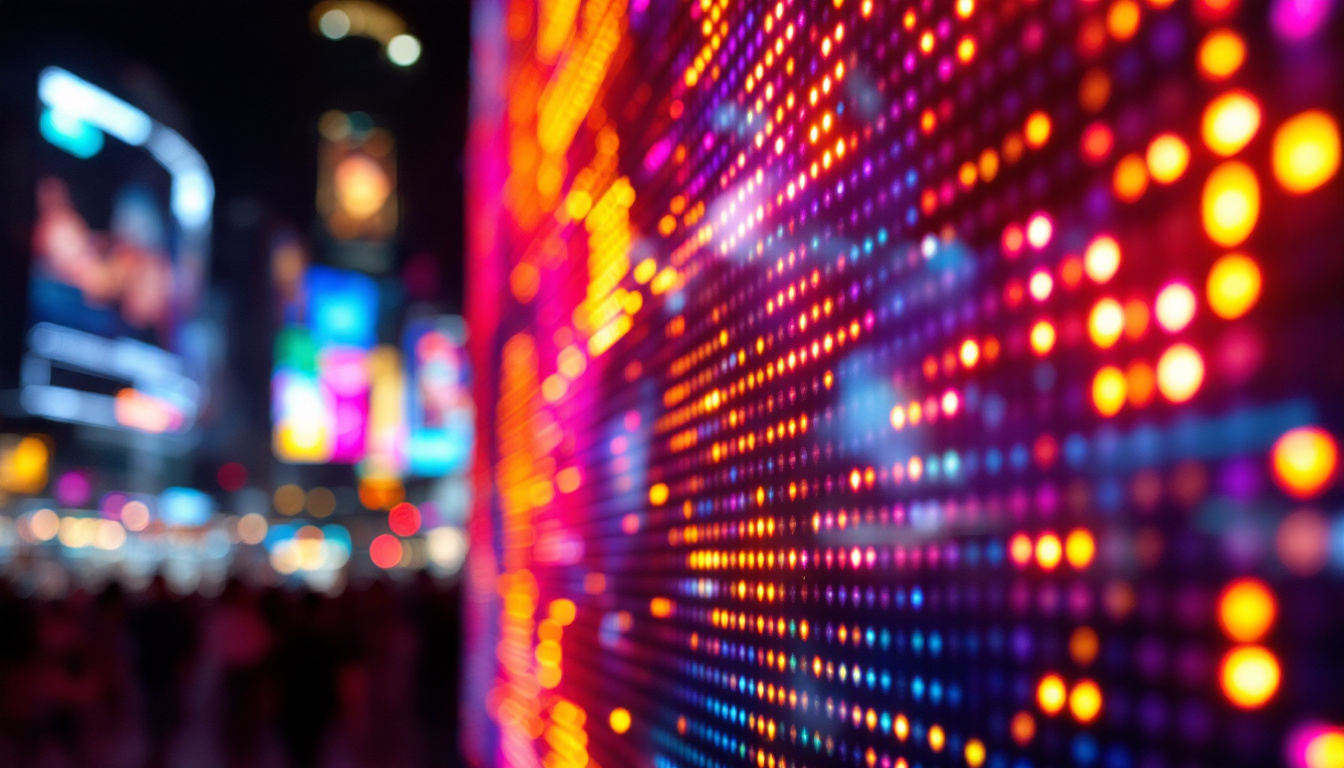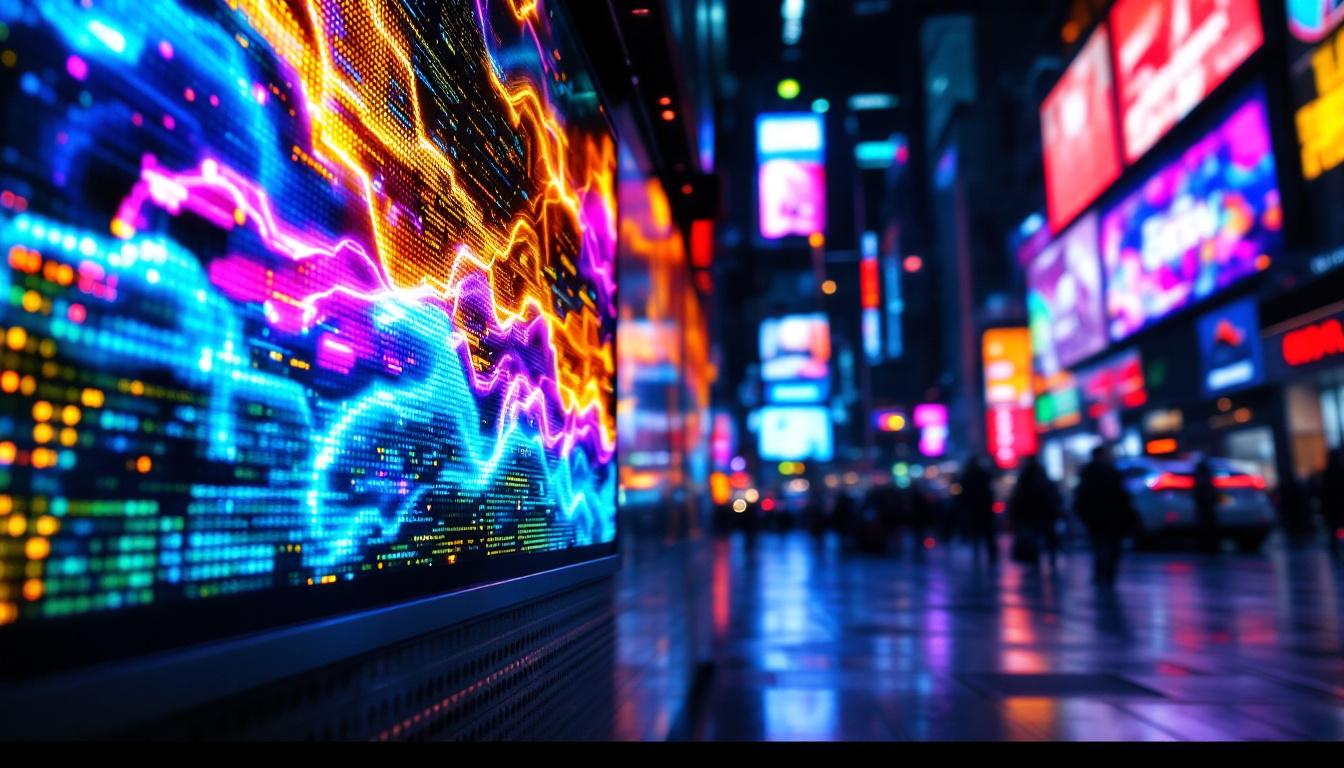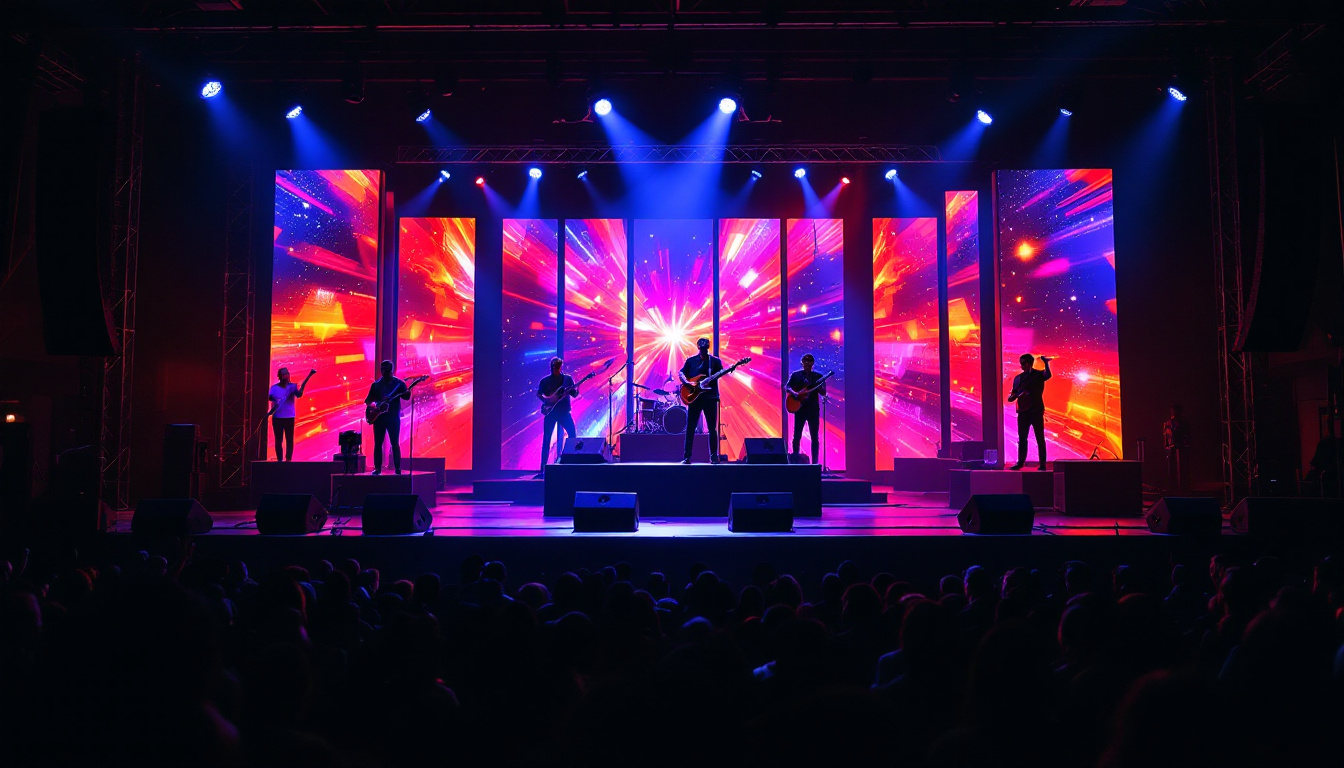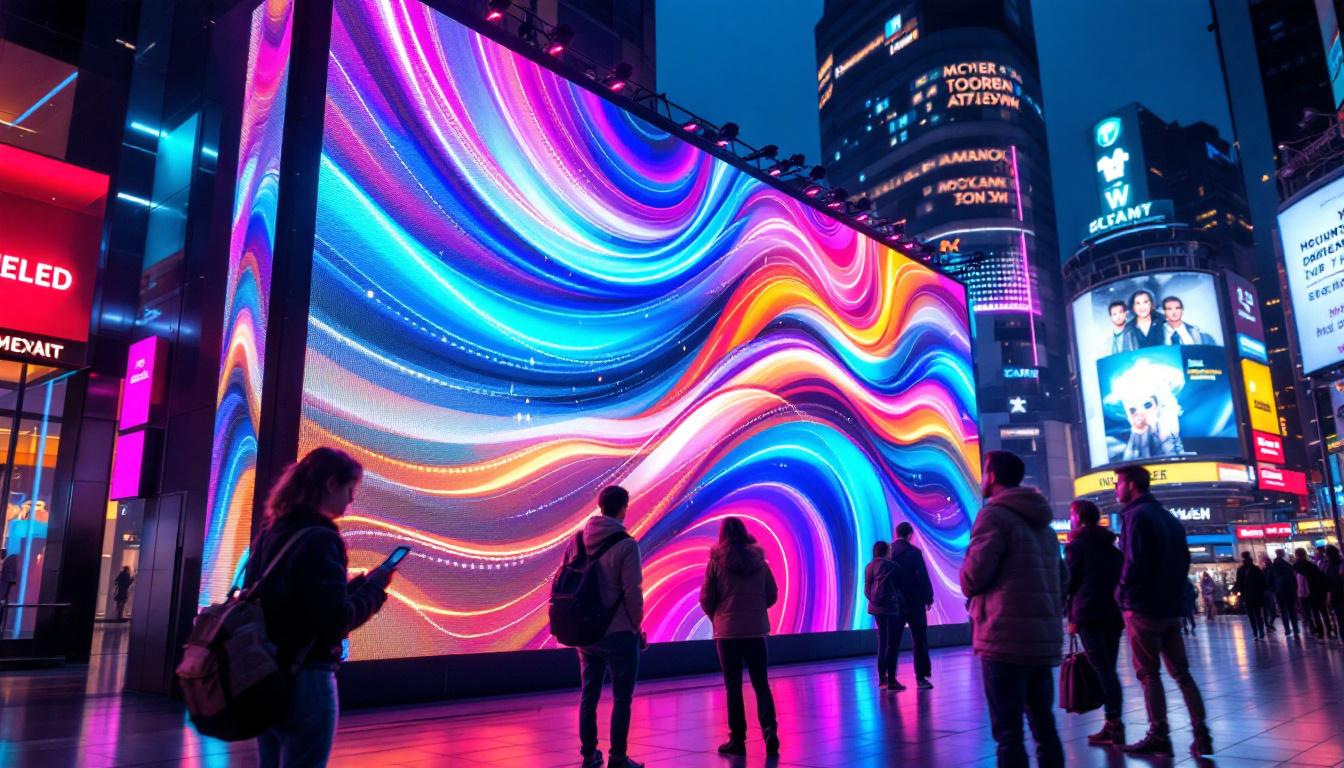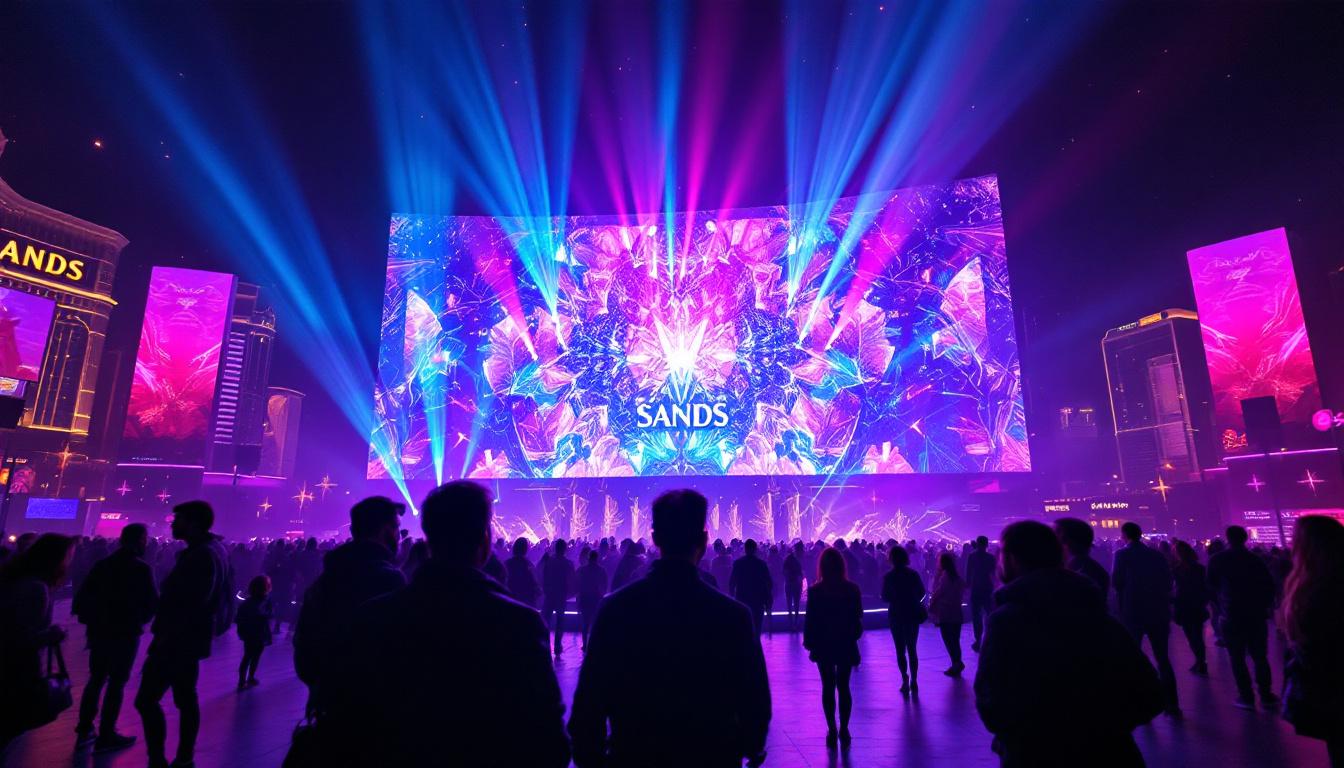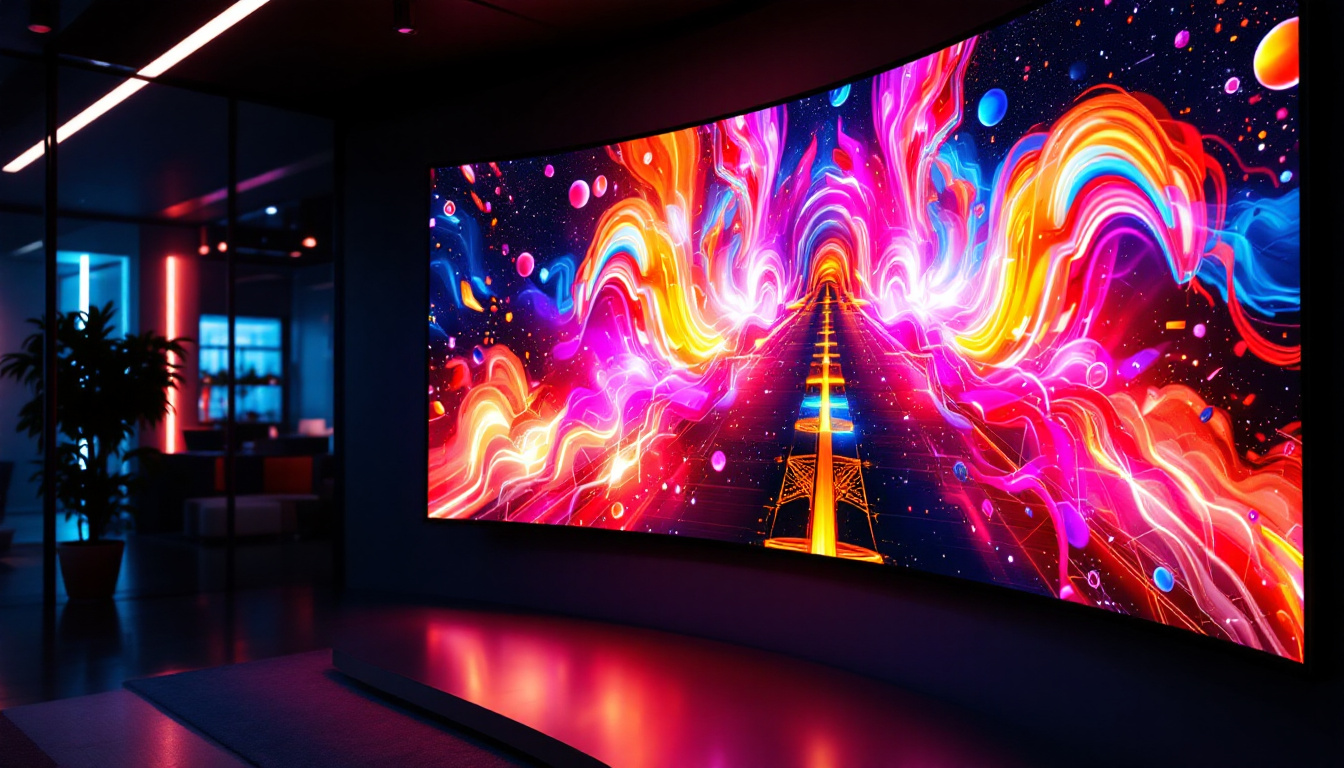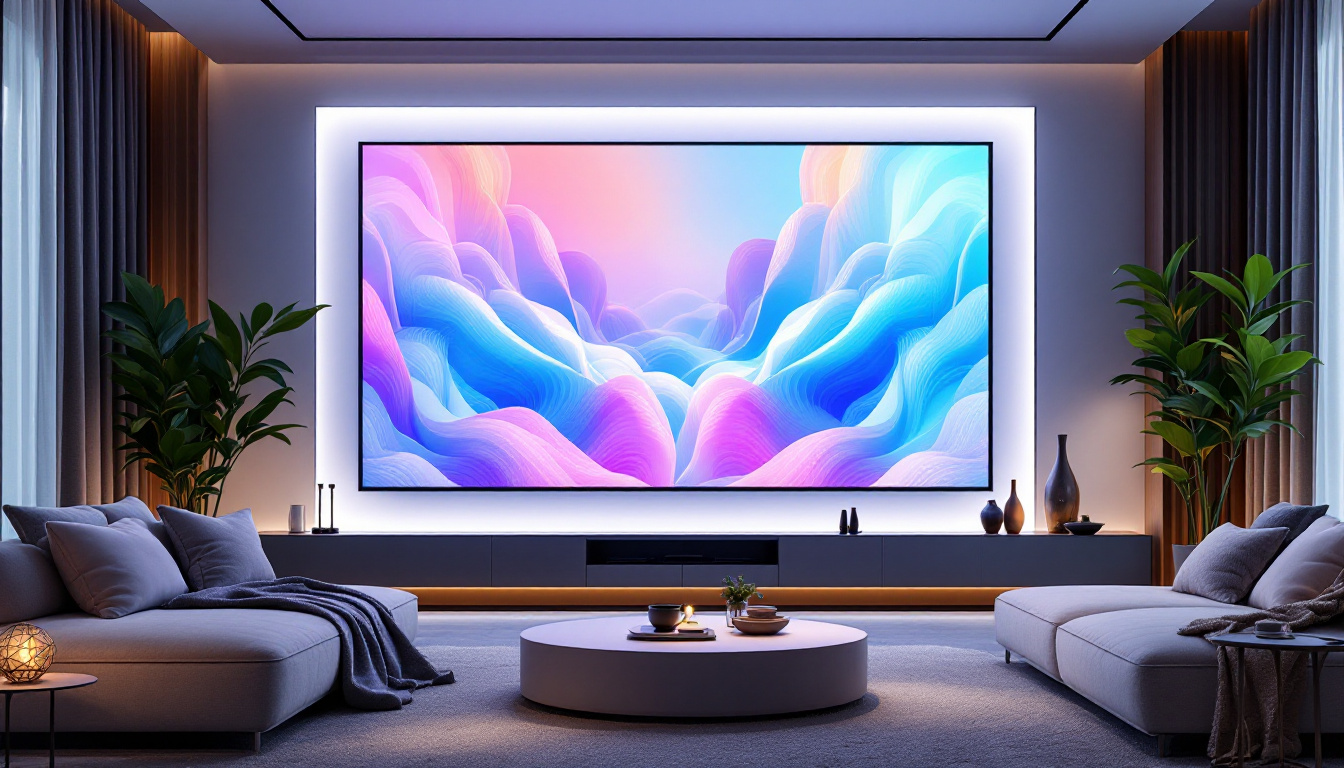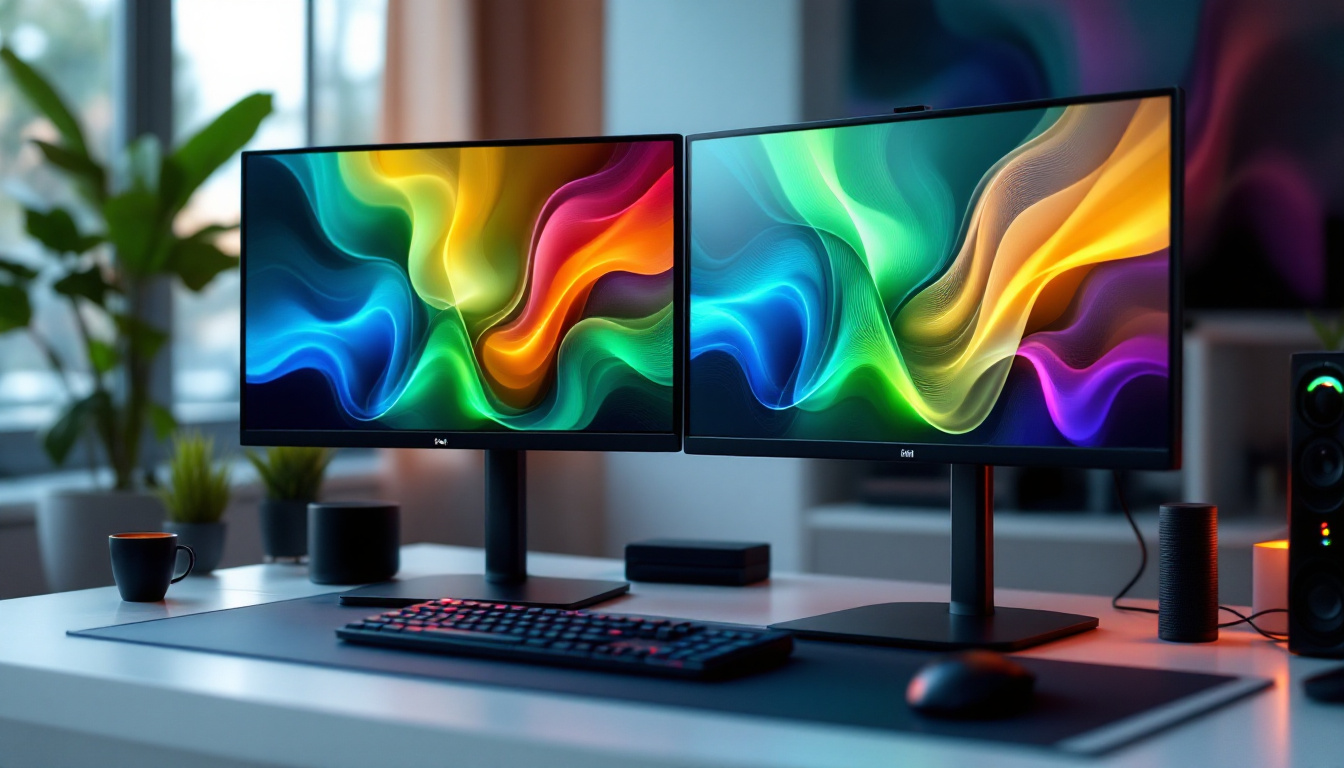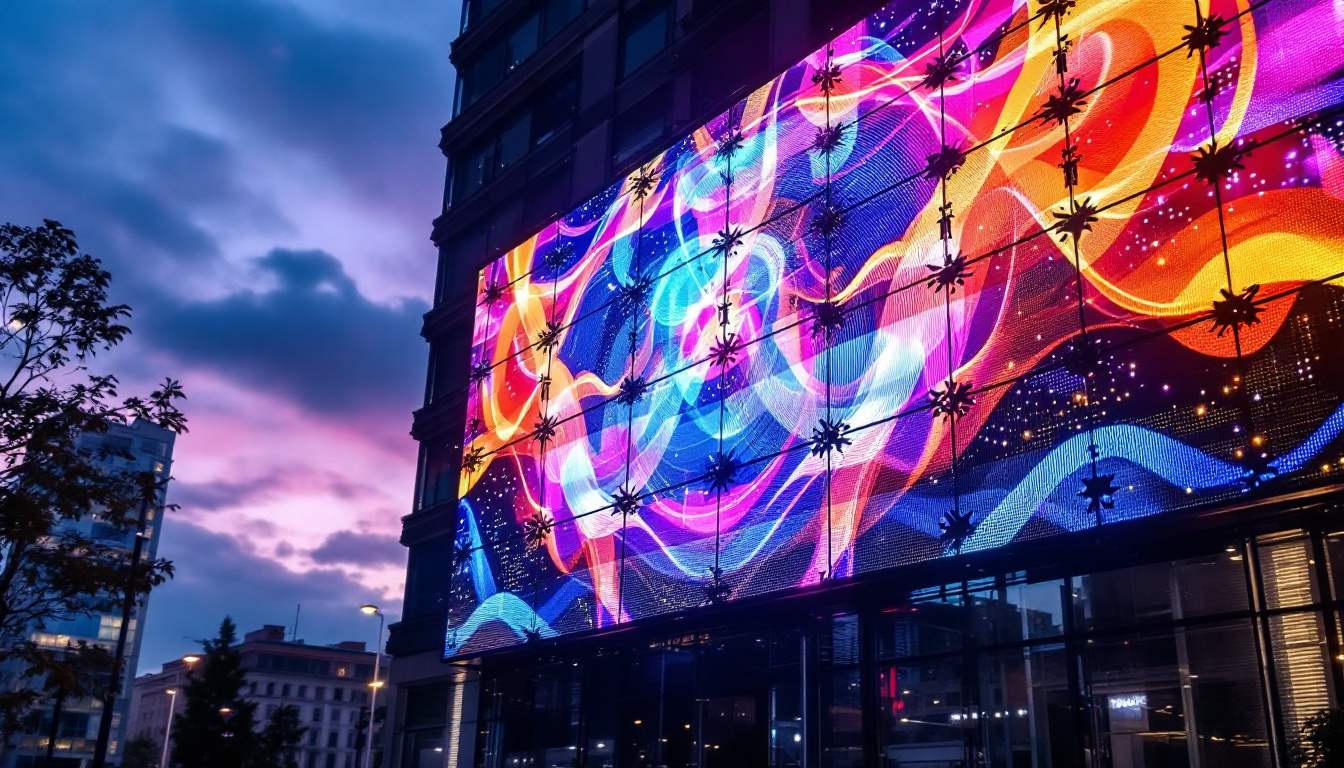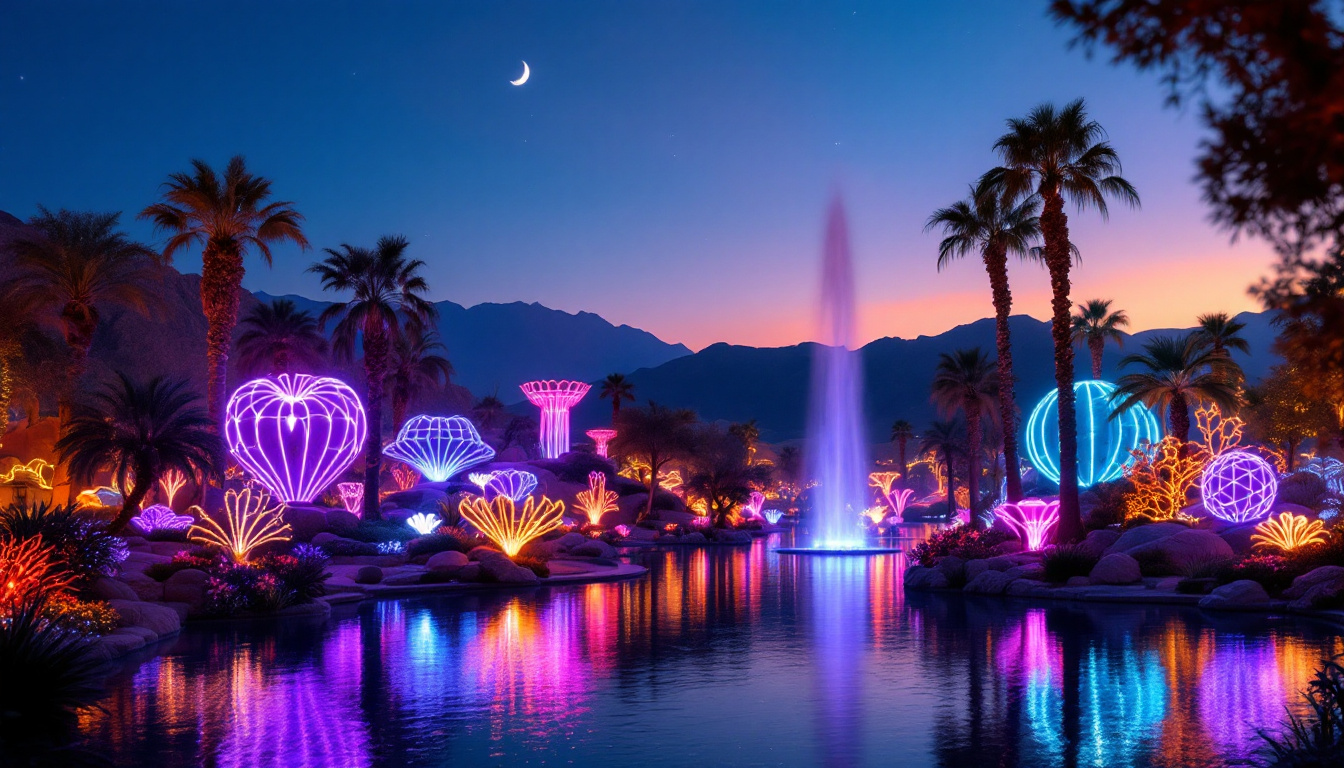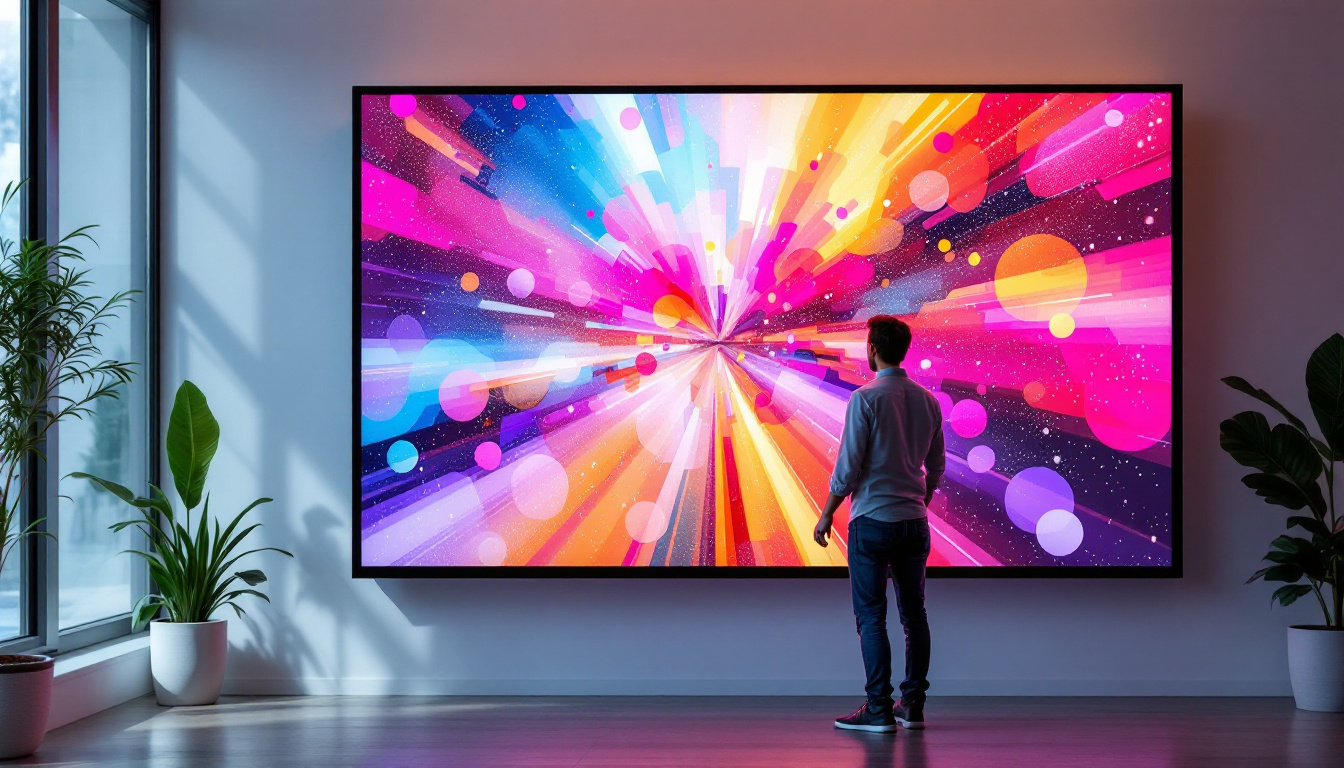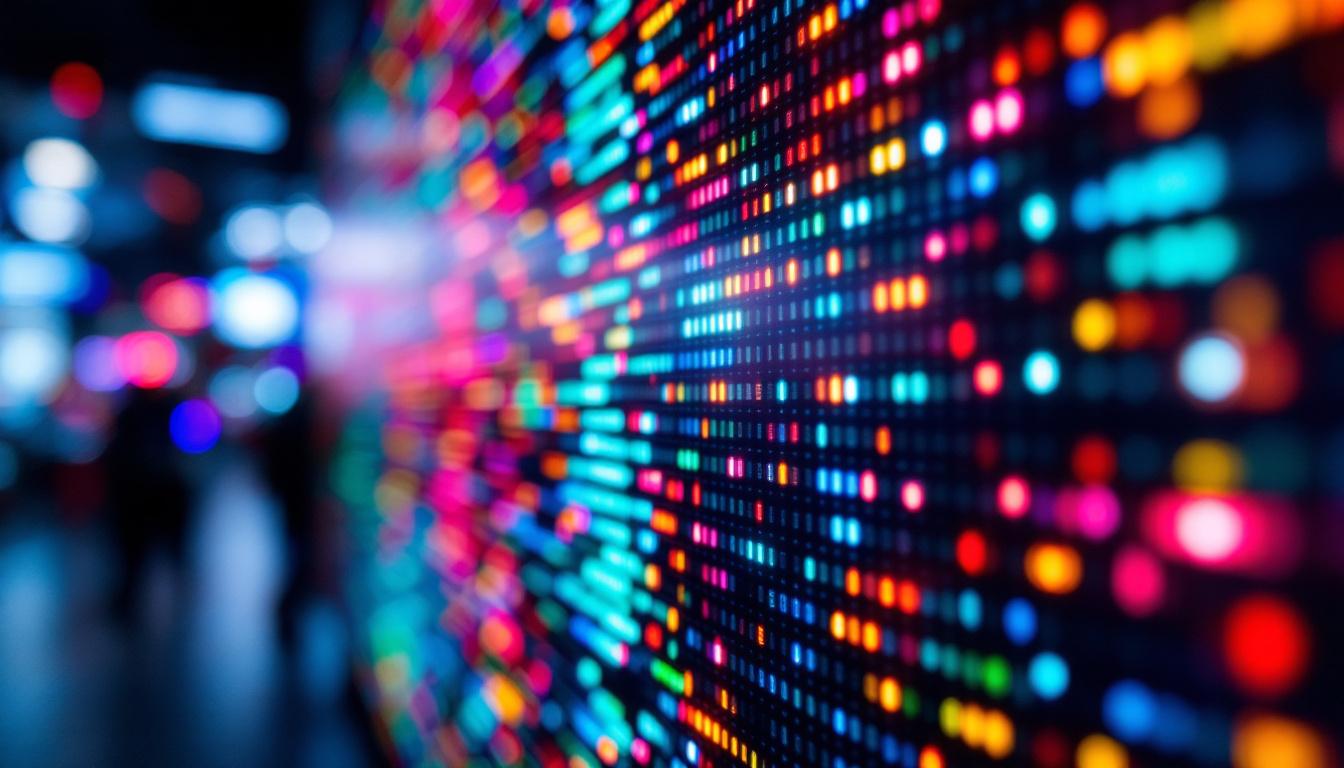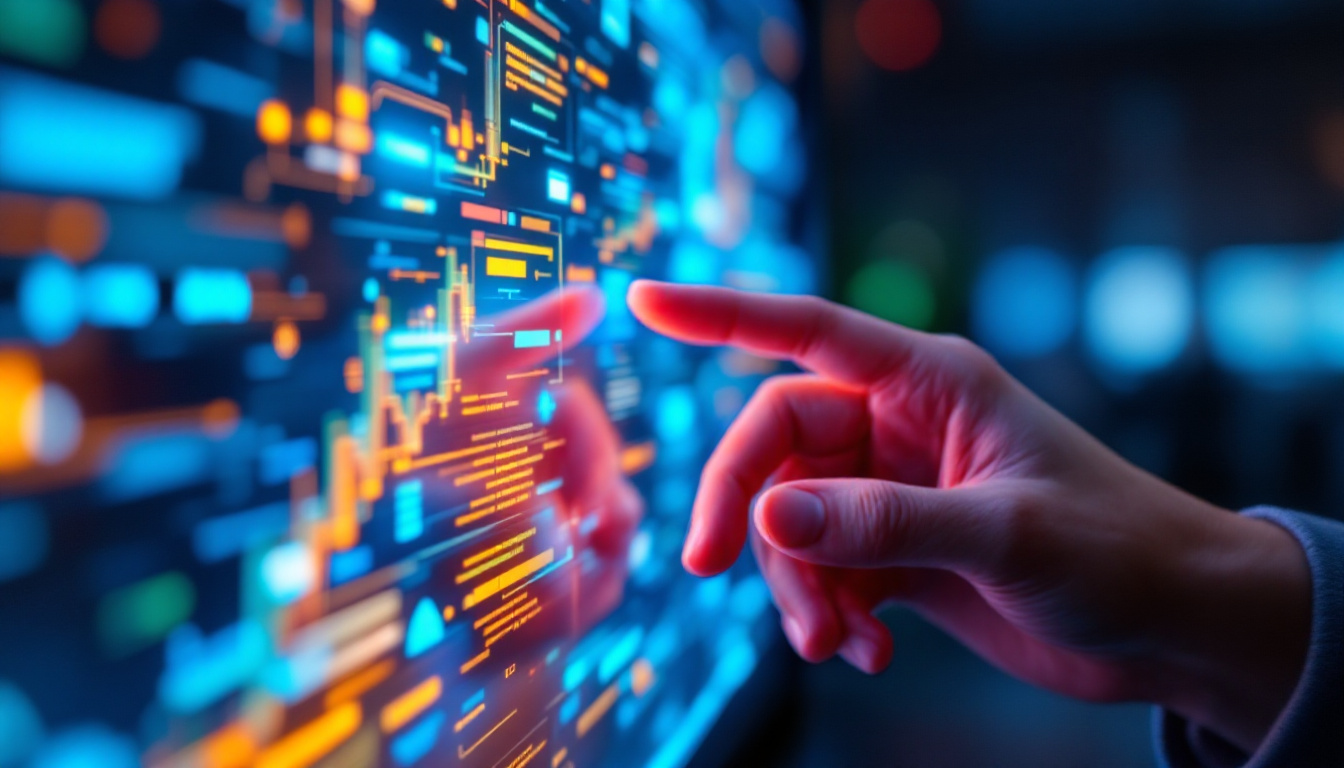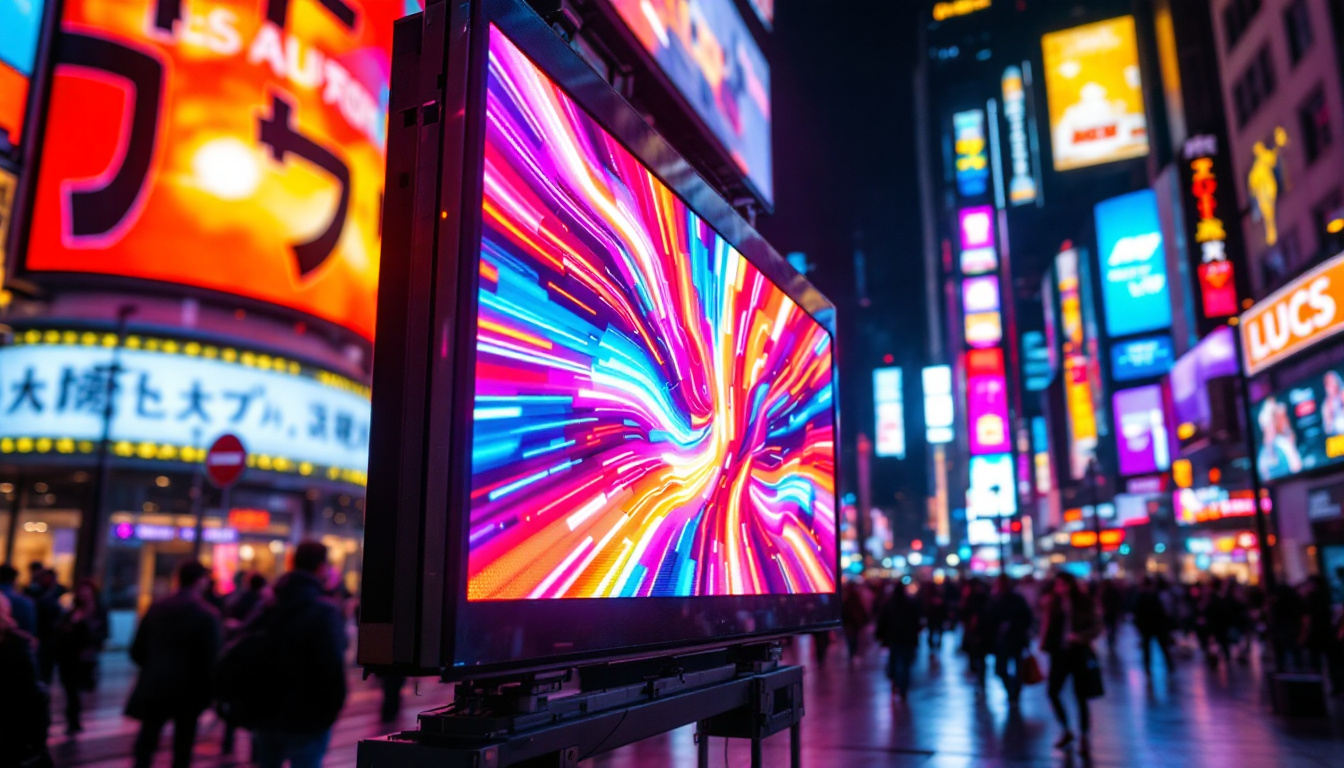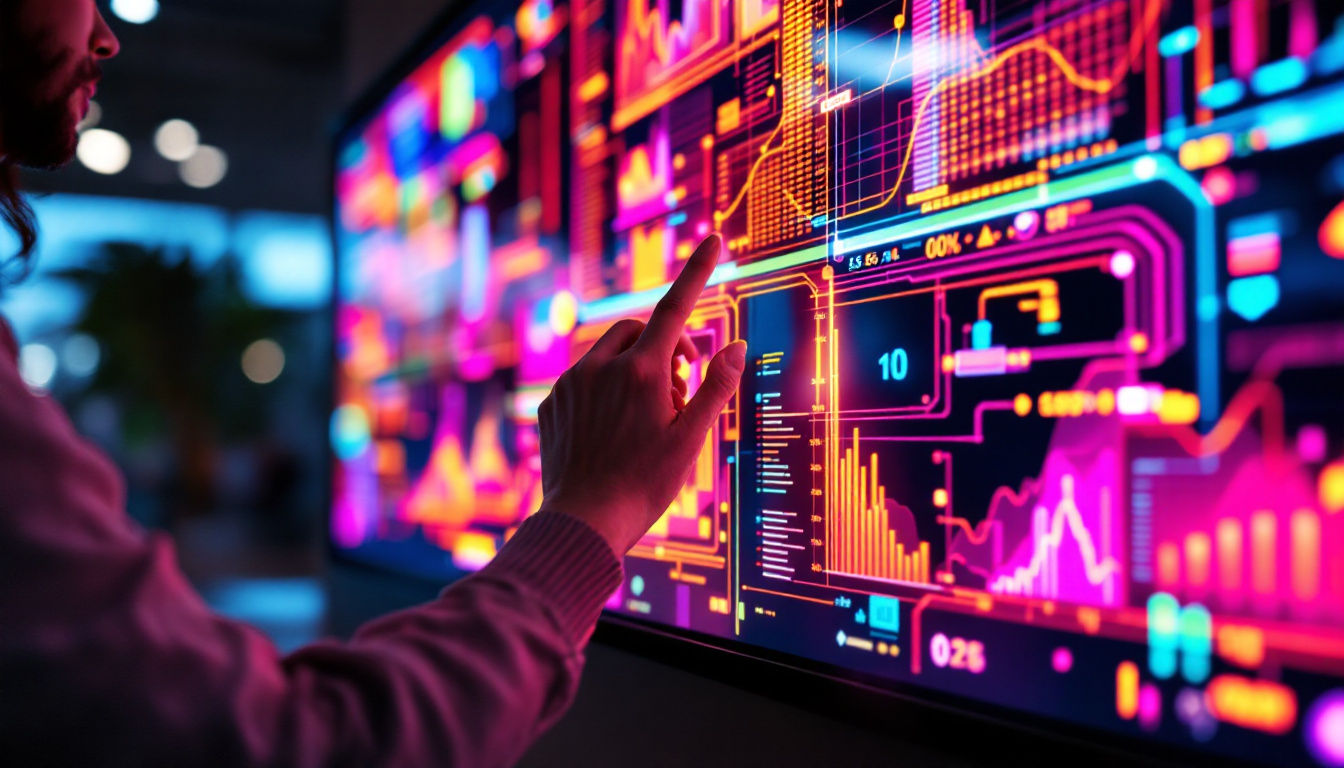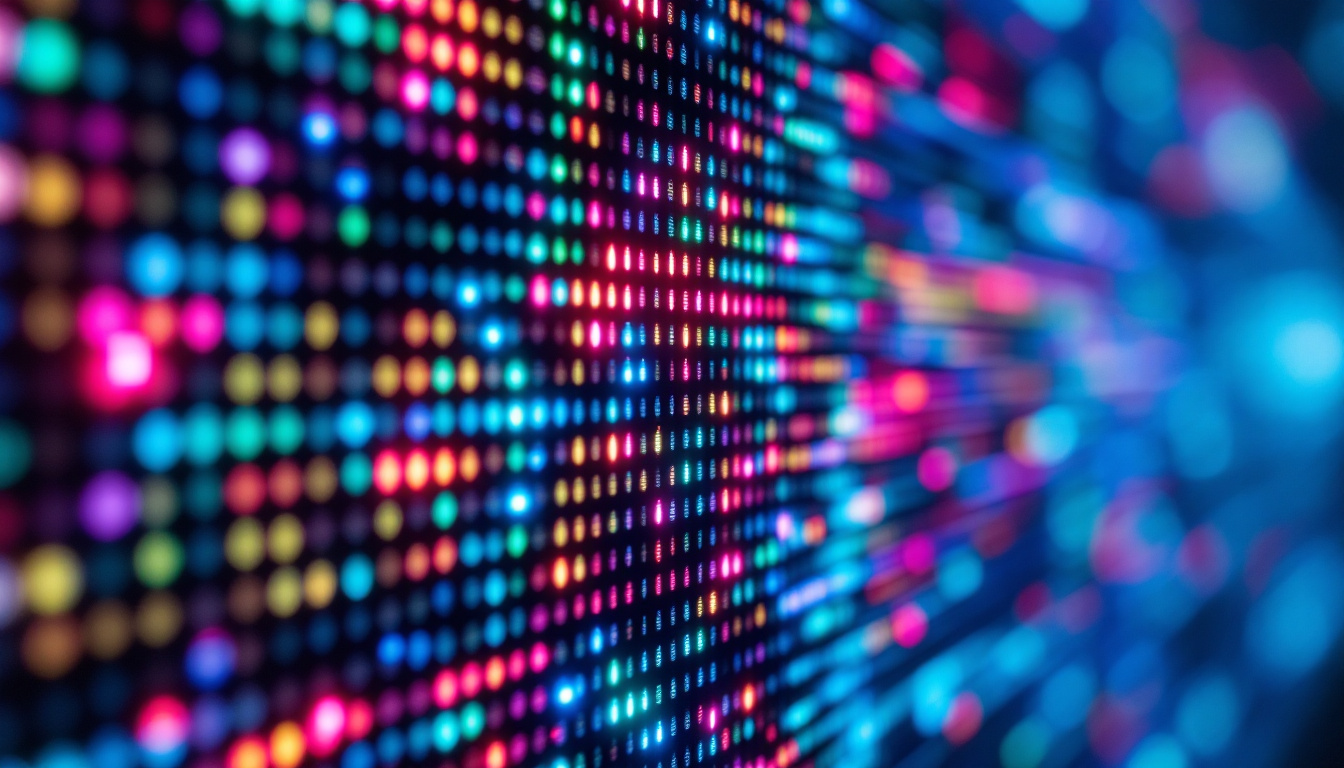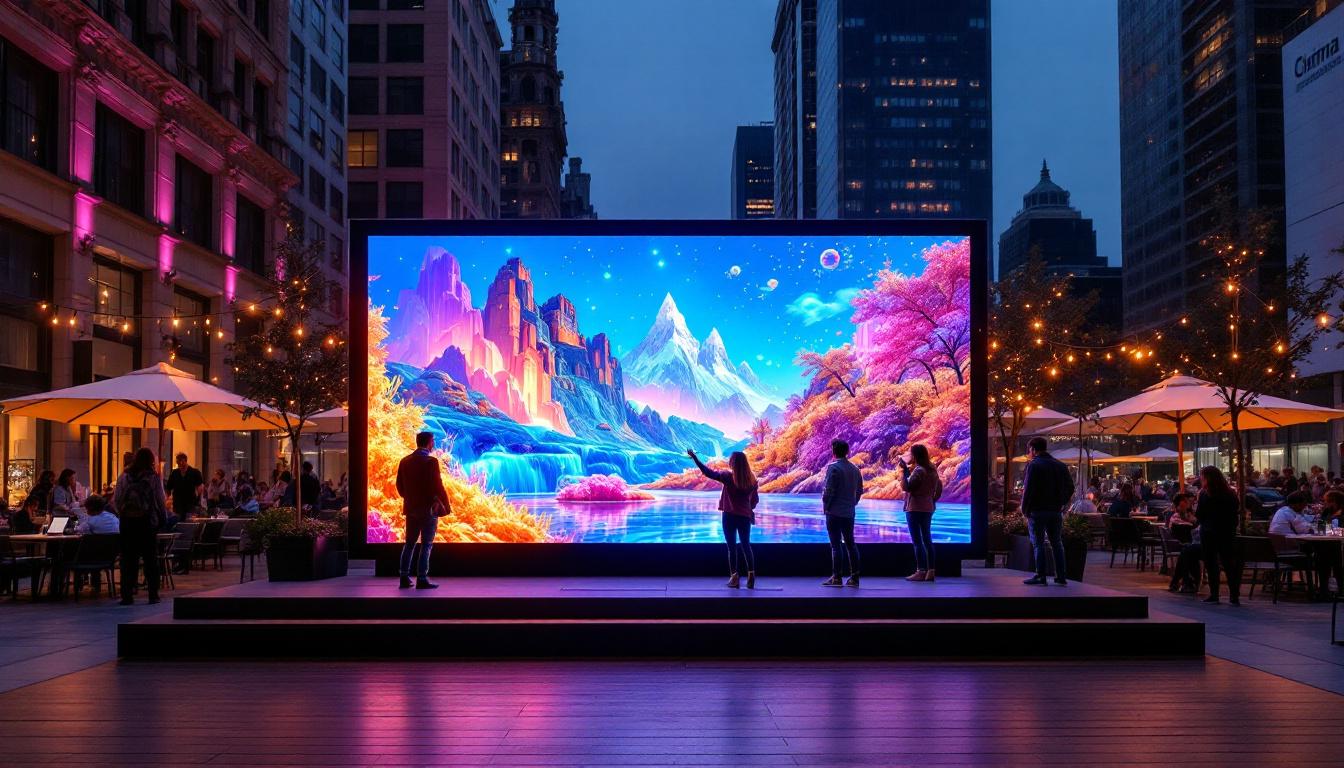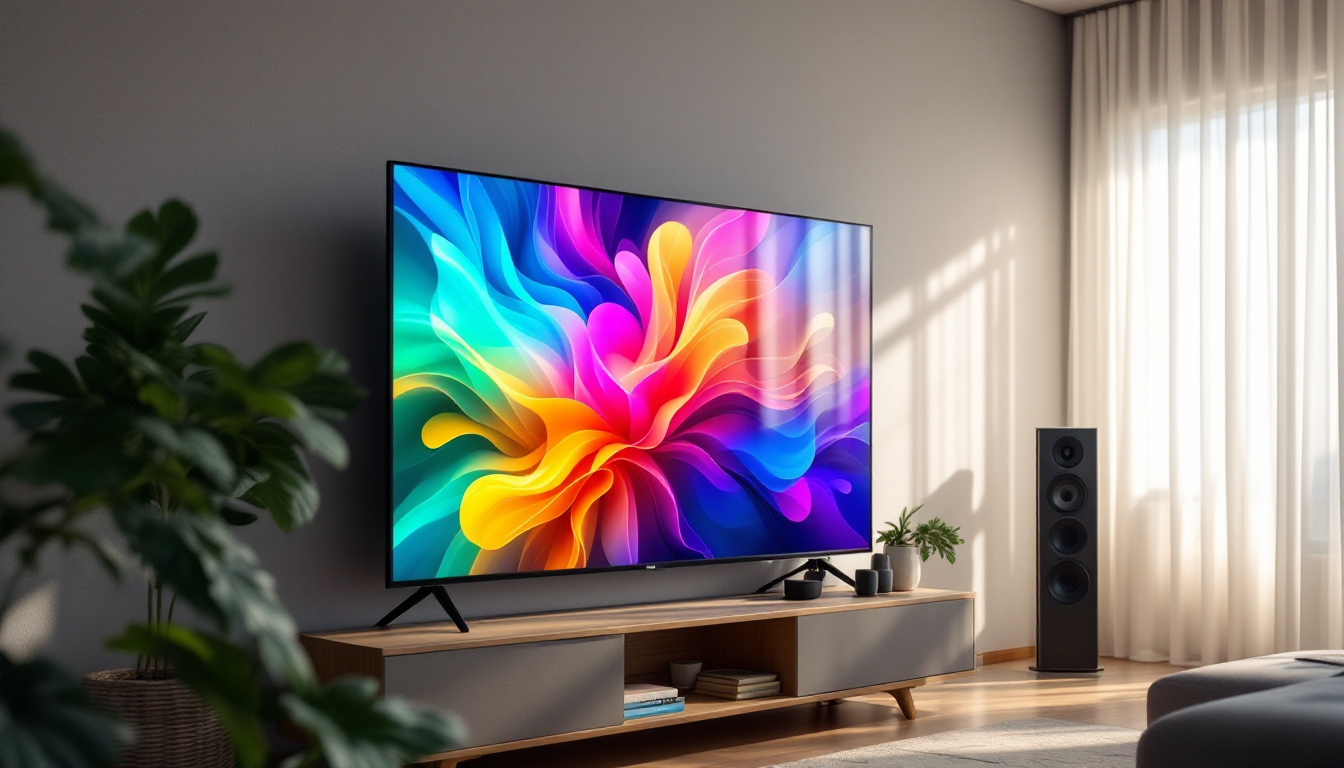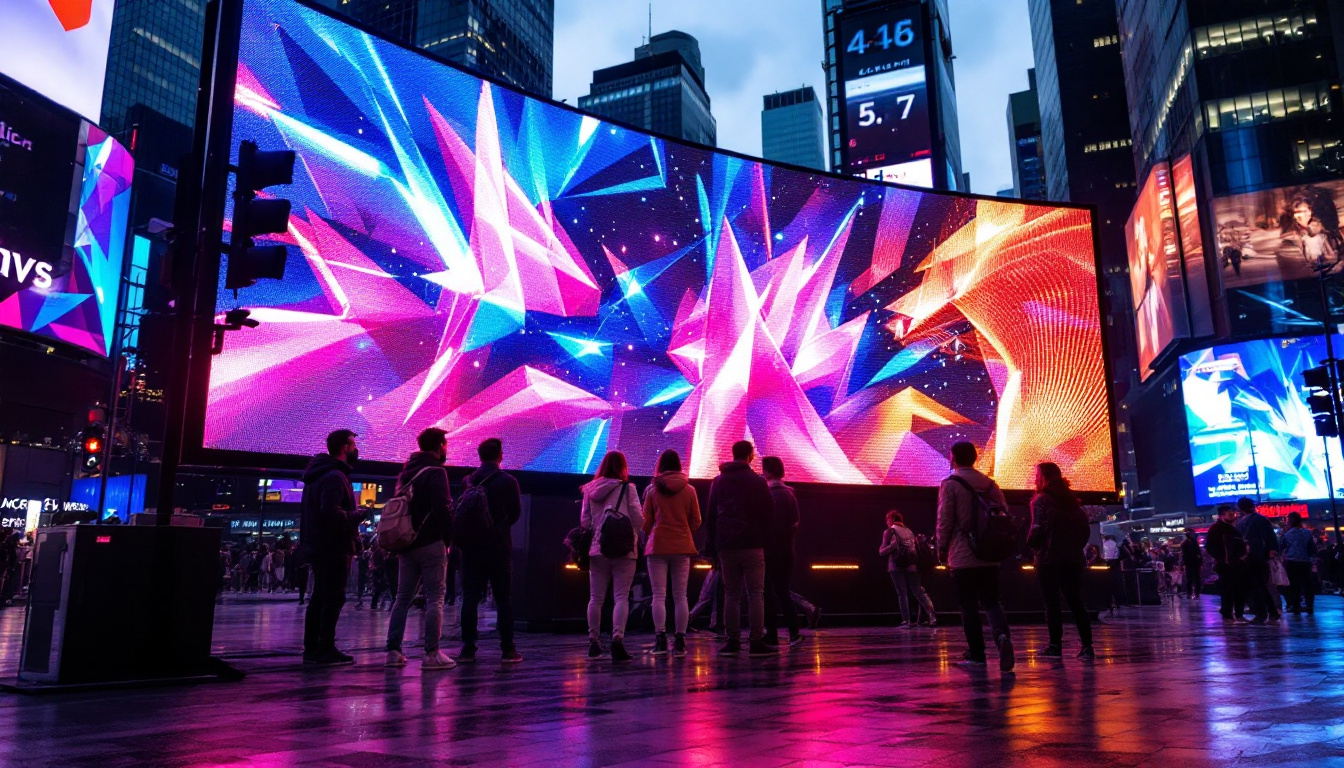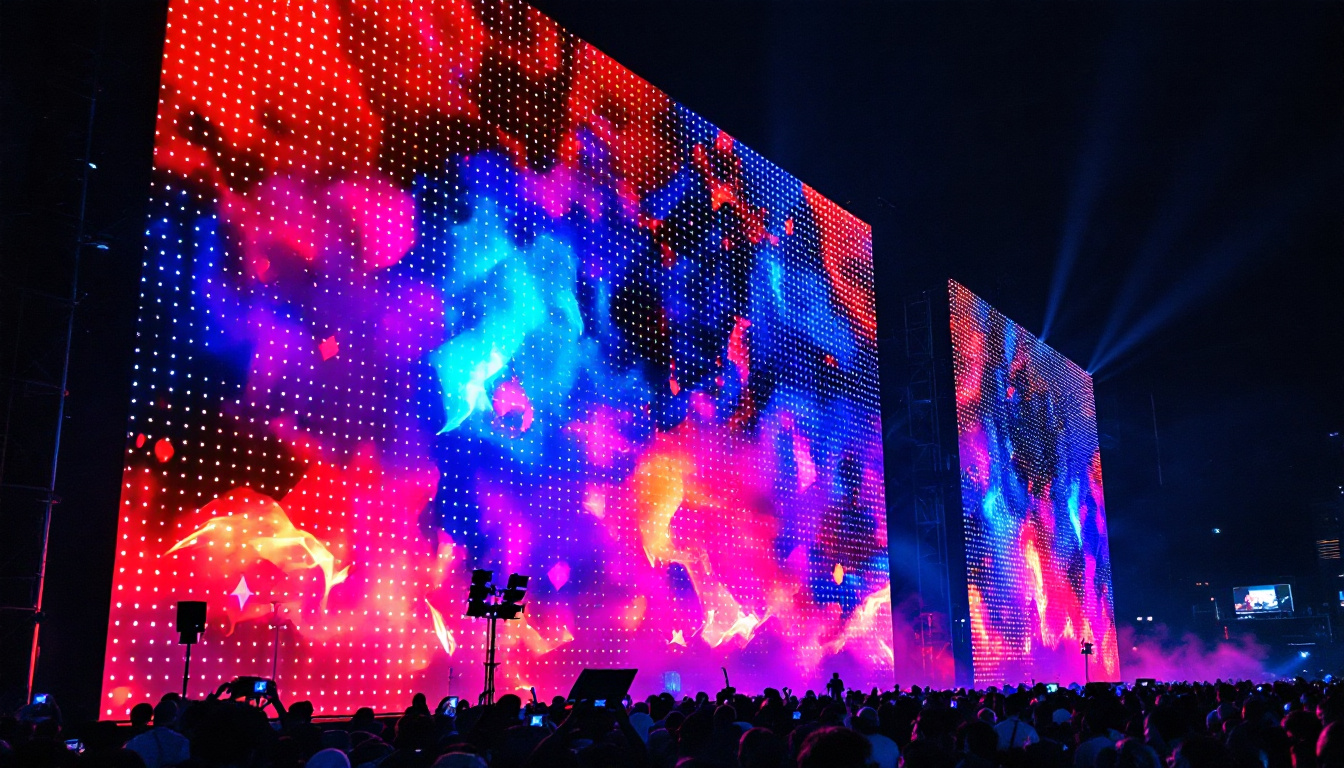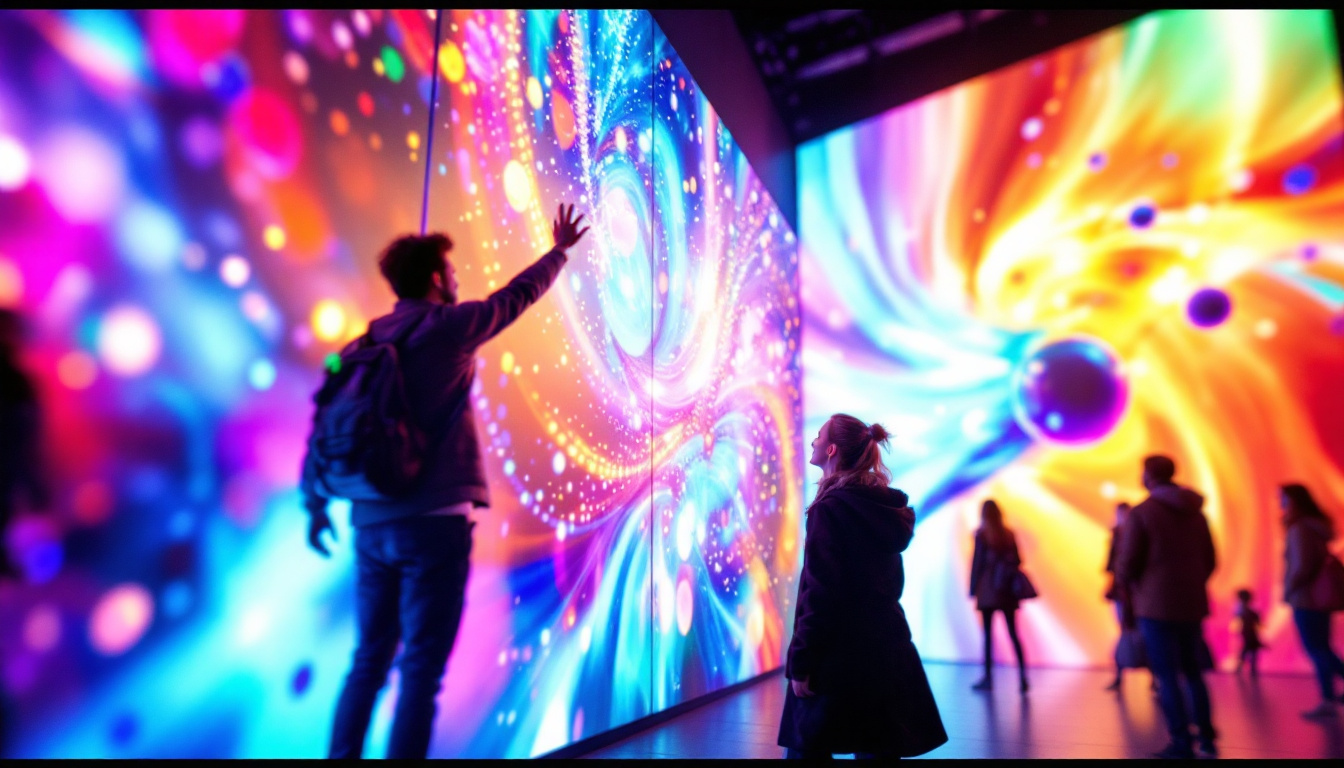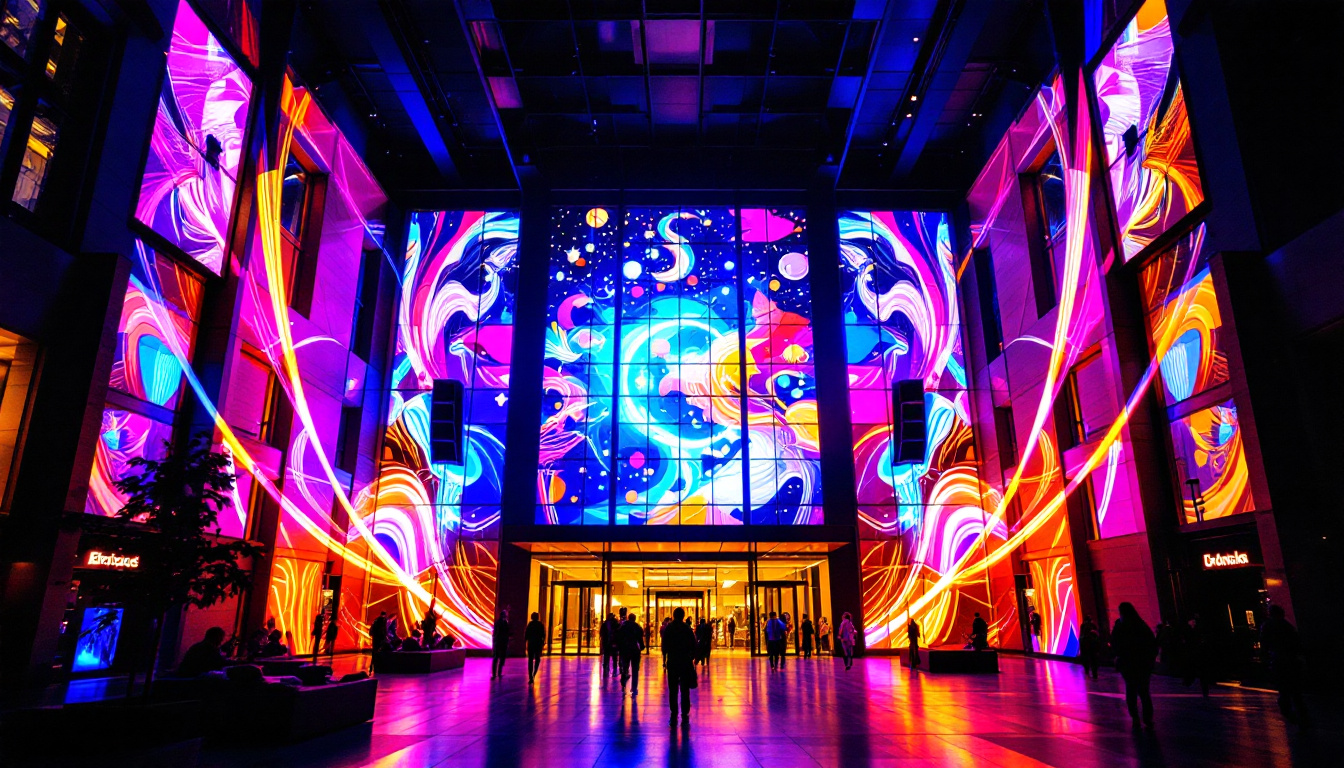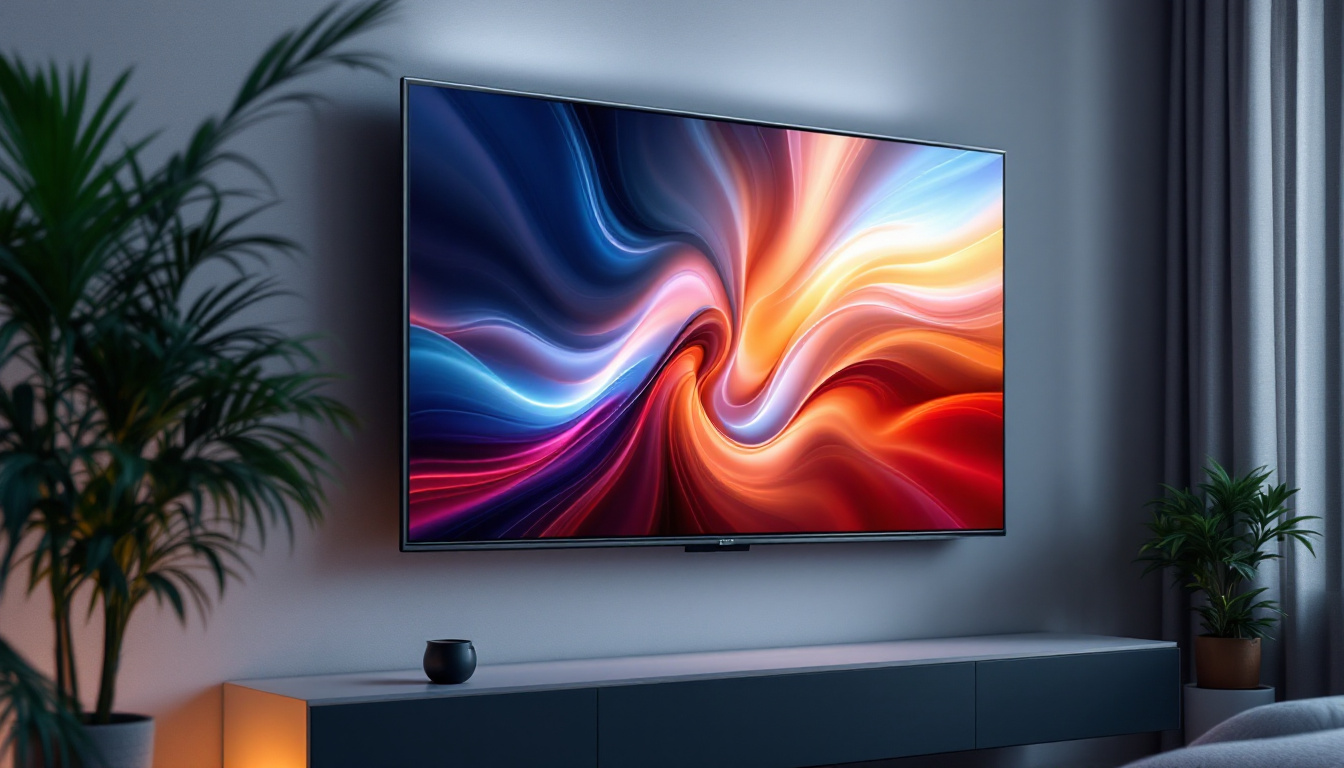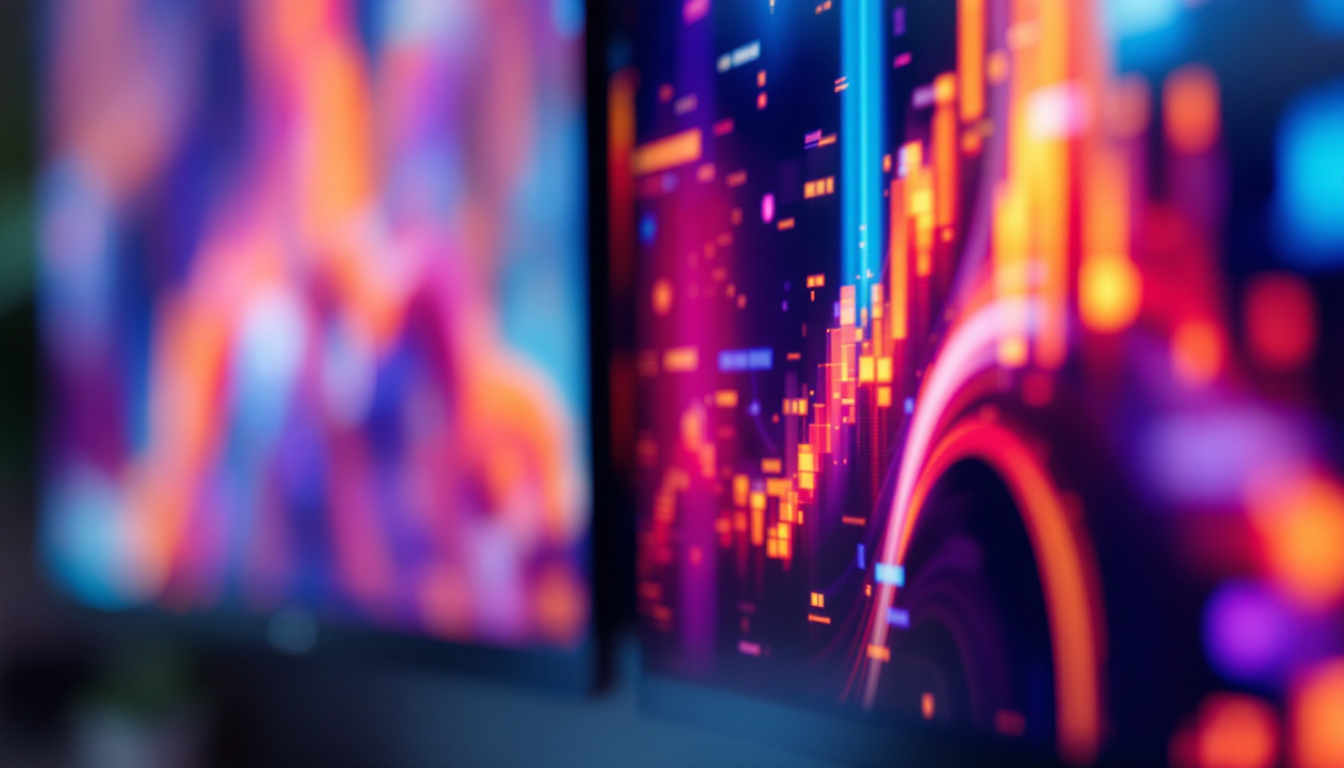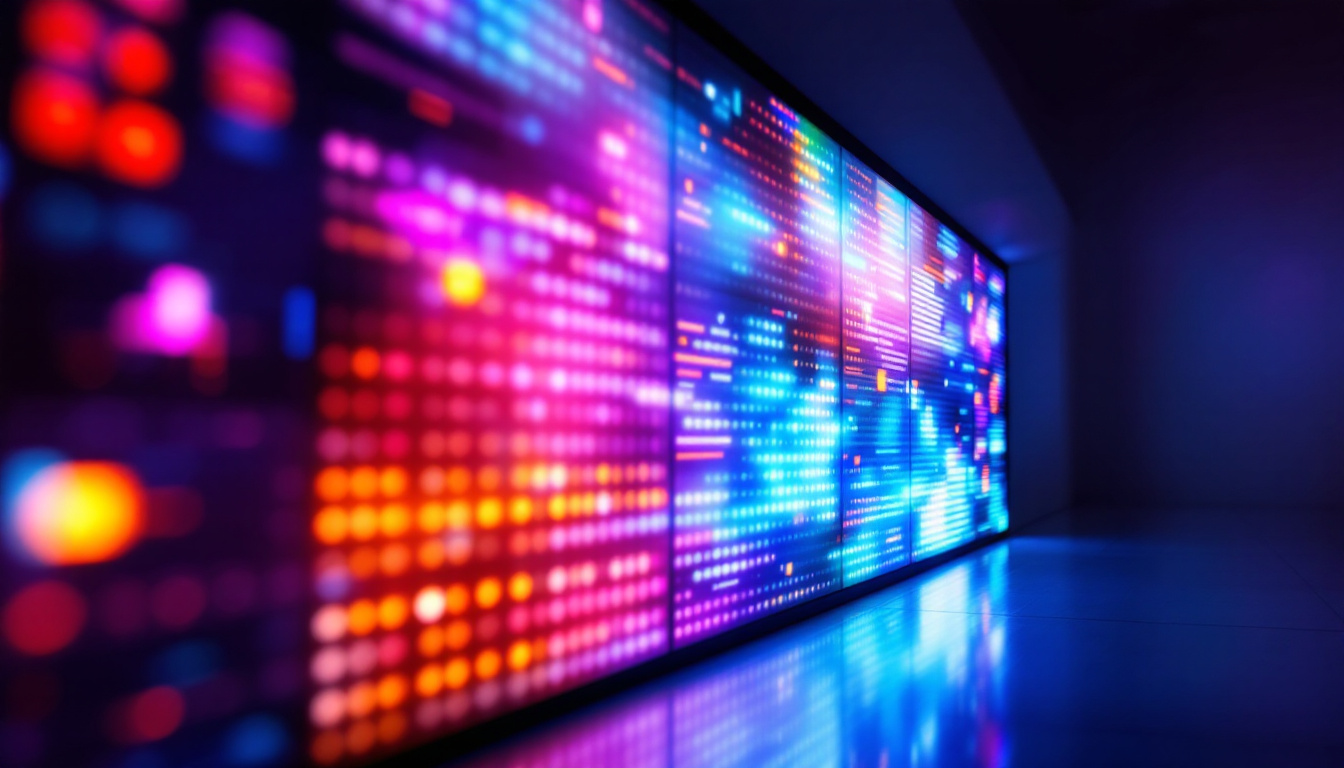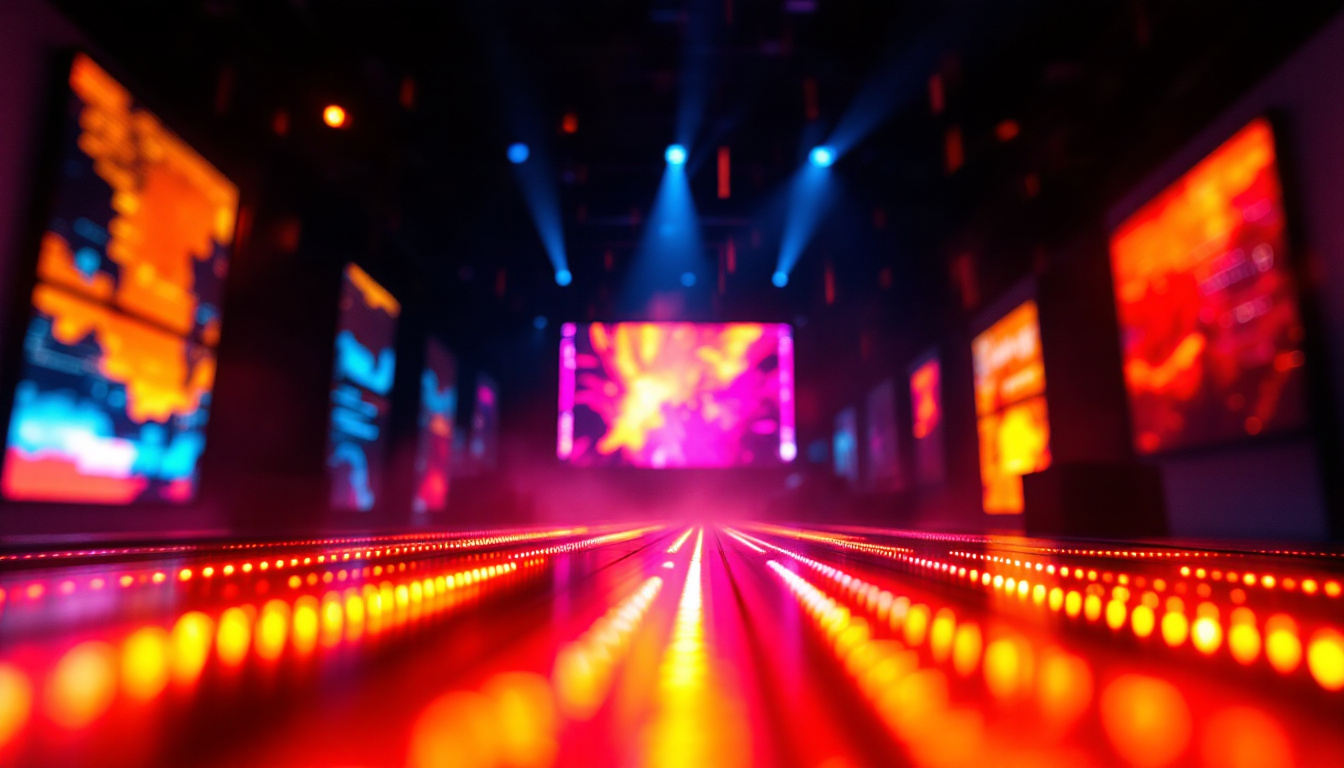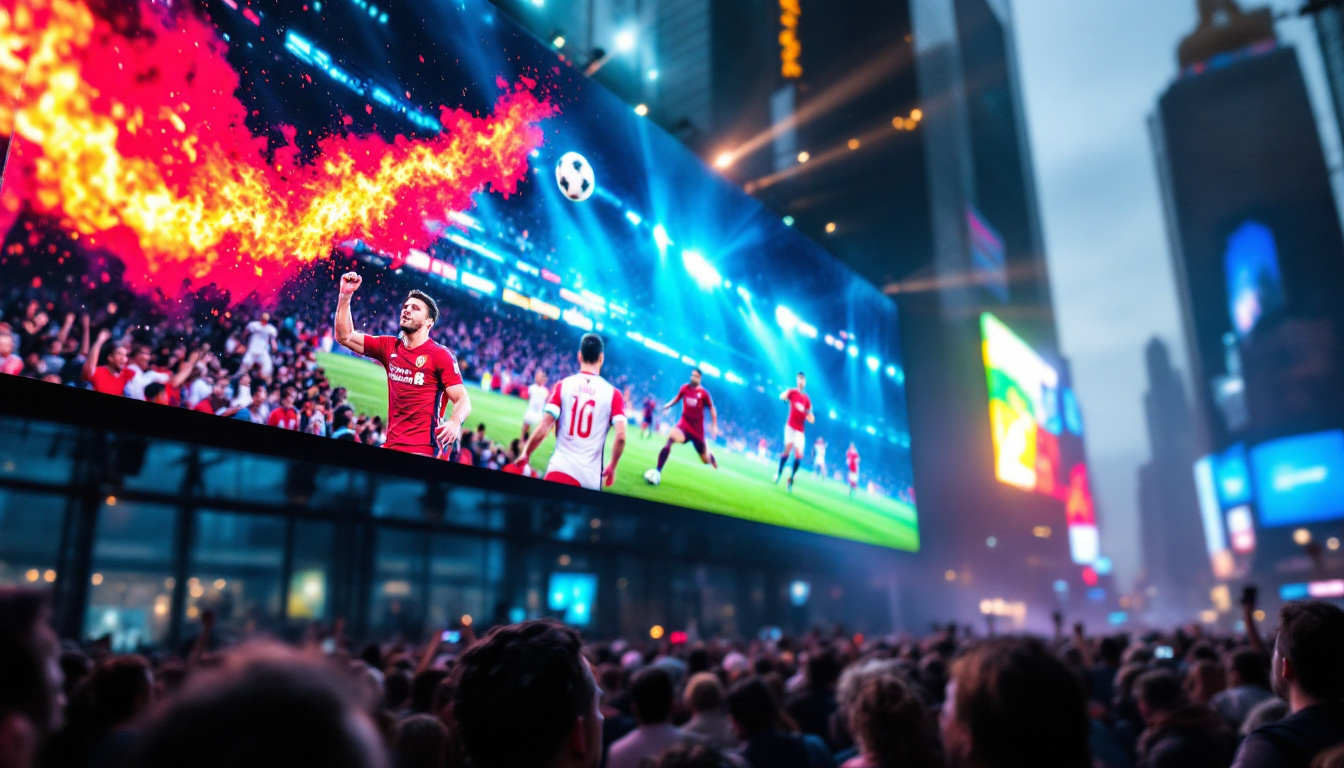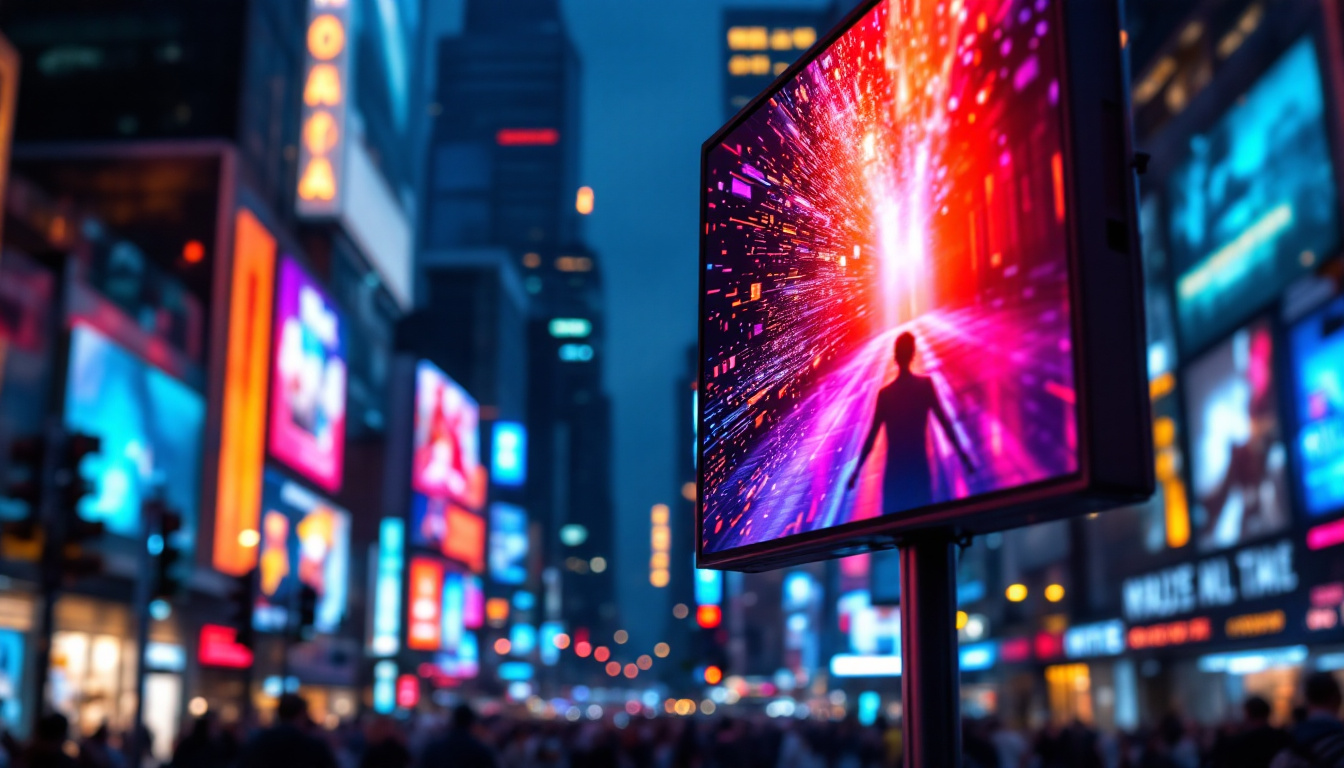In the modern world, LED displays have become ubiquitous, transforming the way information is conveyed and consumed. From large outdoor billboards to small handheld devices, the applications of LED technology are vast and varied. This article delves into the intricacies of LED displays, exploring their functionality, types, advantages, and applications.
Understanding LED Technology
Light Emitting Diodes (LEDs) are semiconductor devices that emit light when an electric current passes through them. This phenomenon is known as electroluminescence. The basic structure of an LED consists of a chip made from a combination of materials, typically gallium, arsenic, or phosphorous, which determine the color of the emitted light.
The Science Behind LEDs
The operation of an LED is rooted in the principles of physics and materials science. When electrons move through the semiconductor material, they recombine with holes, releasing energy in the form of photons. The wavelength of the emitted light, which corresponds to its color, is determined by the bandgap energy of the semiconductor material used.
Different materials can be combined to create a spectrum of colors, allowing for the diverse range of displays seen today. For instance, red LEDs are typically made from aluminum gallium arsenide, while blue LEDs are created using indium gallium nitride. The development of white LEDs, which are essential for general lighting applications, involves a combination of blue LEDs with phosphor coatings that convert some of the blue light into other colors, resulting in a balanced white light output.
Types of LED Displays
LED displays come in various forms, each suited to specific applications. The major types include:
- Direct View LED Displays: These displays are composed of individual LEDs that form the entire image. They are commonly used in large outdoor billboards and digital signage.
- LED Backlit Displays: These displays utilize LEDs to illuminate an LCD screen from behind. They are widely found in televisions and computer monitors, offering improved brightness and color accuracy.
- Organic LED (OLED) Displays: OLED technology uses organic compounds to emit light. This allows for thinner displays and better contrast ratios, making them popular in smartphones and high-end televisions.
In addition to these types, there are also specialized LED displays, such as those used in automotive lighting and architectural applications. For example, LED matrix displays are often employed in traffic signals and scoreboards, where they provide clear visibility from various angles. Furthermore, advancements in LED technology have led to the emergence of smart LED displays that can be controlled remotely, allowing for dynamic content changes and real-time updates, enhancing the interactivity and engagement of digital advertising.
Moreover, the energy efficiency of LEDs is a significant factor contributing to their widespread adoption. Compared to traditional incandescent bulbs, LEDs consume significantly less power and have a longer lifespan, making them a more sustainable choice for both consumers and businesses. This efficiency not only reduces electricity bills but also minimizes the environmental impact associated with energy production, aligning with global efforts to promote greener technologies and reduce carbon footprints.
Advantages of LED Displays
LED displays offer numerous benefits that make them a preferred choice in various industries. Their advantages can be categorized into performance, efficiency, and versatility.
Performance Benefits
One of the most significant advantages of LED displays is their superior brightness and color accuracy. LEDs can produce vibrant colors and maintain image clarity even in bright environments, making them ideal for outdoor advertising and public displays.
Moreover, LED displays have a fast response time, which is crucial for applications requiring dynamic content, such as video displays. This rapid refresh rate ensures that moving images are smooth and free from blurring. The ability to display high-definition video content with minimal latency enhances viewer engagement, making LED displays a popular choice for sports arenas, concert venues, and trade shows.
Energy Efficiency
Energy efficiency is another compelling reason for the widespread adoption of LED technology. Compared to traditional lighting methods, LEDs consume significantly less power, leading to lower energy bills and reduced environmental impact. This efficiency is particularly beneficial for large-scale installations, where energy savings can amount to substantial cost reductions over time. Additionally, many LED displays are designed with smart technology that allows for automatic brightness adjustments based on ambient light conditions, further optimizing energy consumption.
Longevity and Durability
LED displays are known for their long lifespan, often exceeding 50,000 hours of use. This durability translates to fewer replacements and lower maintenance costs. Additionally, LEDs are resistant to shock and vibration, making them suitable for a variety of environments, from bustling city streets to rugged outdoor settings. The robust nature of LED technology also means that these displays can withstand extreme weather conditions, such as heavy rain, snow, and intense heat, ensuring consistent performance regardless of the environment.
Furthermore, the modular design of many LED displays allows for easy repairs and upgrades. If a section of the display malfunctions, it can often be replaced without the need to take down the entire unit. This modularity not only enhances the longevity of the display but also contributes to its cost-effectiveness, as businesses can invest in incremental upgrades rather than complete overhauls. As technology advances, the ability to integrate new features or improve resolution becomes a seamless process, keeping the display relevant and effective for years to come.
Applications of LED Displays
The versatility of LED displays allows them to be used across numerous sectors. Their applications range from advertising to entertainment and beyond.
Advertising and Marketing
In the advertising industry, LED displays have revolutionized how brands communicate with consumers. Dynamic content, including videos and animations, can capture attention more effectively than static images. This capability has led to the widespread use of LED billboards in urban areas, where they can convey messages in real-time, adapting to different audiences and events.
Furthermore, the ability to change content quickly allows for targeted advertising strategies, enhancing engagement and driving sales. Retailers utilize LED displays for promotions, product launches, and interactive experiences, significantly impacting consumer behavior.
Entertainment and Events
In the realm of entertainment, LED displays play a crucial role in concerts, theaters, and sporting events. Large LED screens are often used to enhance the audience’s experience, providing clear visuals and immersive effects. The flexibility of LED technology allows for creative stage designs, where screens can be shaped and arranged in various configurations.
Moreover, live event broadcasting relies heavily on LED technology to ensure that viewers at home receive high-quality visuals. The ability to display real-time graphics, scores, and advertisements further enriches the viewing experience.
Transportation and Public Spaces
LED displays are increasingly being integrated into transportation systems and public spaces. Train stations, airports, and bus terminals utilize LED screens for real-time information dissemination, including schedules, delays, and safety announcements. This not only improves passenger experience but also enhances operational efficiency.
Public spaces, such as parks and plazas, often feature LED displays for community events, public service announcements, and entertainment. These displays foster engagement and connectivity within communities, serving as platforms for information sharing and cultural expression.
Challenges and Considerations
While LED displays offer numerous advantages, there are also challenges and considerations that need to be addressed. Understanding these factors is essential for effective implementation and long-term success.
Initial Costs
The initial investment for LED display technology can be significant, especially for large-scale installations. While the long-term savings in energy and maintenance costs are substantial, the upfront expenditure may deter some businesses or organizations from making the switch. It is crucial to conduct a thorough cost-benefit analysis to determine the feasibility of investing in LED technology.
Environmental Impact
Despite their energy efficiency, the environmental impact of LED displays should not be overlooked. The production and disposal of LED components can contribute to electronic waste and pollution. It is essential for manufacturers and consumers to adopt sustainable practices, such as recycling old displays and using eco-friendly materials in production.
Technical Expertise
Implementing LED technology often requires specialized knowledge and skills. Organizations may need to invest in training or hire experts to ensure proper installation and maintenance. This technical aspect can pose a barrier for some businesses, particularly smaller enterprises without the necessary resources.
The Future of LED Displays
The future of LED displays looks promising, with ongoing advancements in technology and applications. Innovations in design, efficiency, and functionality are expected to shape the landscape of visual communication.
Emerging Technologies
As technology continues to evolve, new developments in LED displays are on the horizon. Miniaturization of LED components is leading to the creation of smaller, more flexible displays that can be integrated into a variety of surfaces, from clothing to architecture. This trend opens up exciting possibilities for interactive and immersive experiences.
Additionally, advancements in smart technology are paving the way for LED displays that can adapt to their environment. Features such as automatic brightness adjustment based on ambient light and integration with IoT devices are becoming increasingly common, enhancing the functionality of LED displays.
Enhanced User Experience
Future LED displays will likely prioritize user experience, with a focus on interactivity and personalization. Touch-sensitive screens and augmented reality features are expected to become more prevalent, allowing users to engage with content in innovative ways. This shift towards user-centric design will redefine how information is presented and consumed.
Conclusion
LED displays have transformed the landscape of visual communication, offering unparalleled advantages in brightness, efficiency, and versatility. As technology continues to advance, the potential applications of LED displays will expand, further integrating them into everyday life. While challenges remain, the benefits of adopting LED technology far outweigh the drawbacks, making it a worthwhile investment for businesses and organizations across various sectors.
In a world where information is constantly evolving, LED displays stand out as a beacon of innovation, illuminating the path toward a more connected and engaging future.
Illuminate Your Space with LumenMatrix
As you consider the future of visual communication and the role LED displays play in it, LumenMatrix stands at the forefront, ready to illuminate your brand’s message with our innovative LED display technology. Whether you’re looking to captivate passersby with an Outdoor LED Wall Display, engage fans with a dynamic LED Sports Display, or revolutionize your space with a Custom LED Display, LumenMatrix has a solution tailored to your needs. Embrace the power of LED and create unforgettable visual experiences. Check out LumenMatrix LED Display Solutions today and step into a brighter, more engaging world.

